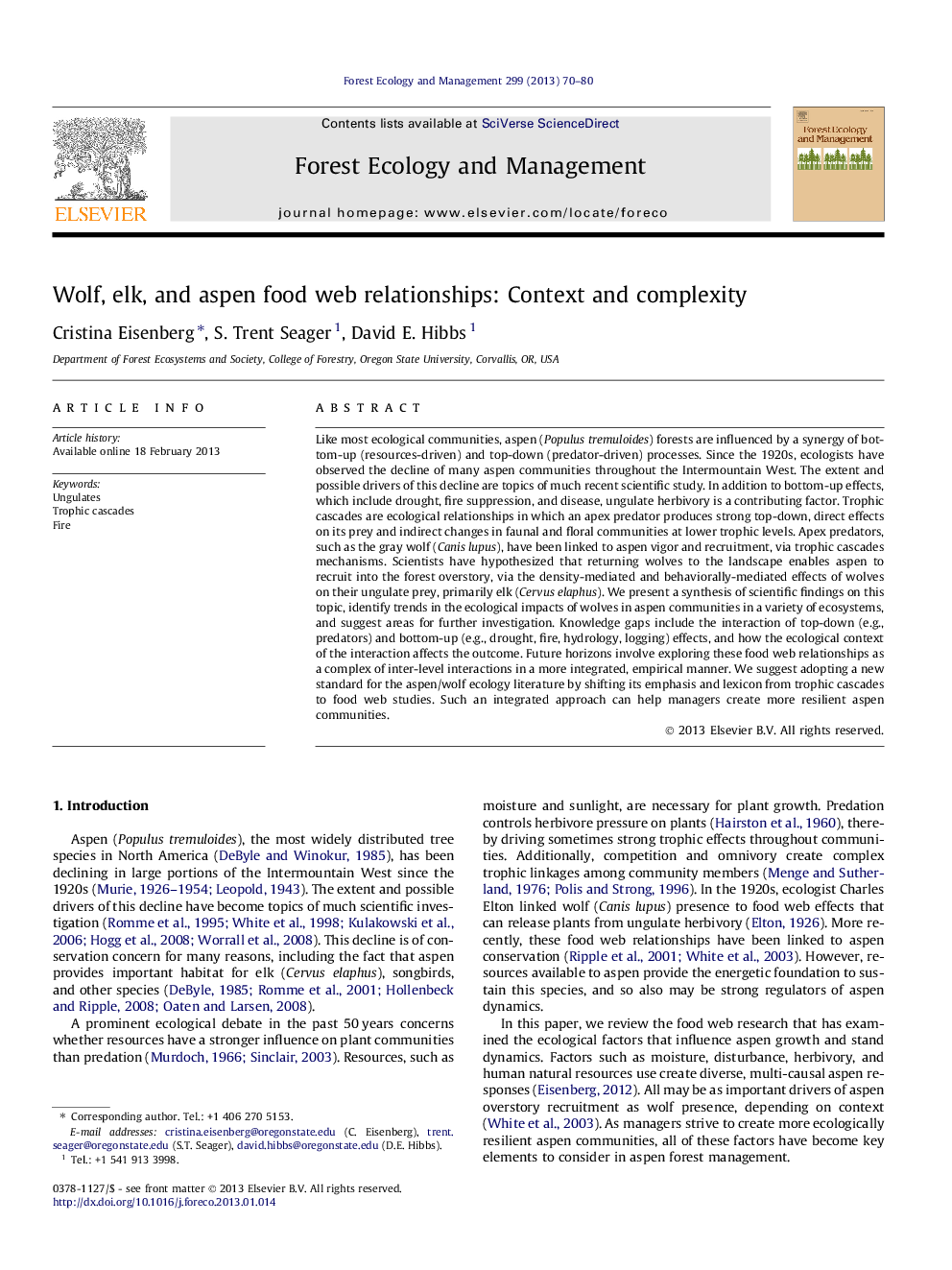| کد مقاله | کد نشریه | سال انتشار | مقاله انگلیسی | نسخه تمام متن |
|---|---|---|---|---|
| 86957 | 159225 | 2013 | 11 صفحه PDF | دانلود رایگان |

Like most ecological communities, aspen (Populus tremuloides) forests are influenced by a synergy of bottom-up (resources-driven) and top-down (predator-driven) processes. Since the 1920s, ecologists have observed the decline of many aspen communities throughout the Intermountain West. The extent and possible drivers of this decline are topics of much recent scientific study. In addition to bottom-up effects, which include drought, fire suppression, and disease, ungulate herbivory is a contributing factor. Trophic cascades are ecological relationships in which an apex predator produces strong top-down, direct effects on its prey and indirect changes in faunal and floral communities at lower trophic levels. Apex predators, such as the gray wolf (Canis lupus), have been linked to aspen vigor and recruitment, via trophic cascades mechanisms. Scientists have hypothesized that returning wolves to the landscape enables aspen to recruit into the forest overstory, via the density-mediated and behaviorally-mediated effects of wolves on their ungulate prey, primarily elk (Cervus elaphus). We present a synthesis of scientific findings on this topic, identify trends in the ecological impacts of wolves in aspen communities in a variety of ecosystems, and suggest areas for further investigation. Knowledge gaps include the interaction of top-down (e.g., predators) and bottom-up (e.g., drought, fire, hydrology, logging) effects, and how the ecological context of the interaction affects the outcome. Future horizons involve exploring these food web relationships as a complex of inter-level interactions in a more integrated, empirical manner. We suggest adopting a new standard for the aspen/wolf ecology literature by shifting its emphasis and lexicon from trophic cascades to food web studies. Such an integrated approach can help managers create more resilient aspen communities.
► Review of wolf-elk-aspen trophic cascades research.
► Disturbance, natural resources management, and context influence aspen food webs.
► Offers suggestions for management application of aspen food web science.
► Disturbance, natural resources management and context influence aspen ecology.
► Trophic cascades should be considered in managing aspen forests for resilience.
► More work needs to be done to deepen our knowledge of wolf–elk–aspen relationships.
Journal: Forest Ecology and Management - Volume 299, 1 July 2013, Pages 70–80